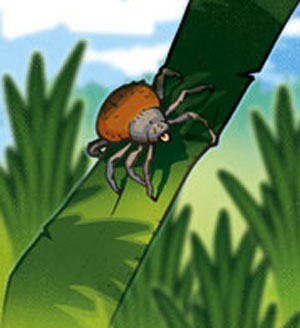By continuing your visit to this site, you accept the use of cookies.
Learn + I agreeRhabdochlamydia helvetica

Discovered in Switzerland
Rhabdochlamydia helvetica is a bacterium classified in the same group as the chlamydia1. It was discovered in 2017 by researches from the Institute of Microbiology of Lausanne in collaboration with the National Reference Centre for tick-transmitted Diseases, in a sheep’s tick (Ixodes Ricinus). These ticks were collected in Switzerland, which granted it the name “helvetica”.
The same researches examined about 63’000 ticks collected in 172 different locations in Switzerland and observed that about 1 tick out of 400 (0.25%) is infected by a bacteria species, such as Rhabdochlamydia.
Hard to detect
All the bacteria belonging to the chlamydia1 order have the same particularity: they can only survive and multiply if they are inside a cell.
This feature makes it hard to study them because they don’t grow well in laboratories.
For that reason, hospital diagnostic laboratories cannot use common bacterial detection techniques to identify them


Simple ticks’ parasites?
Currently we do not know whether Rhabdochlamydia helvetica can cause diseases in humans or not.
Research on new germs is often time-consuming and it often takes a few years after the initial discovery to establish a link to a given disease.
It is possible that Rhabdochlamydia helvetica is simply a ticks’ parasite2 and that it doesn’t cause any disease in humans.

Rhabdochlamydia helvetica has several other “cousins” living in other arthropods3. For example, Rhabdochlamydia crassificans lives in cockroaches and Rhabdochlamydia porcellionis lives in woodlices.
Chlamydia1 = There are several species of Chlamydia. They can cause a broad range of diseases. One of these bacteria, Chlamydia trachomatis is responsible for a rather frequent sexually transmitted infection (STI), touching about 5% of the sexually active population in Europe. The infection is often asymptomatic and usually goes unnoticed. Women, who have been exposed to Chlamydia trachomatis can become sterile or suffer a miscarriage.
Parasite2 = Animal or plant organism which cannot survive without its host.
Arthropod3 = Small animal with articulated legs and an external rigid skeleton, which forces it to evolve through successive molts. Over one million and a half different species of arthropods exist. It is the one animal group most present on earth. It includes insects, arachnids (spiders, scorpions and mites), shellfish, and Myriapoda (centipedes).
